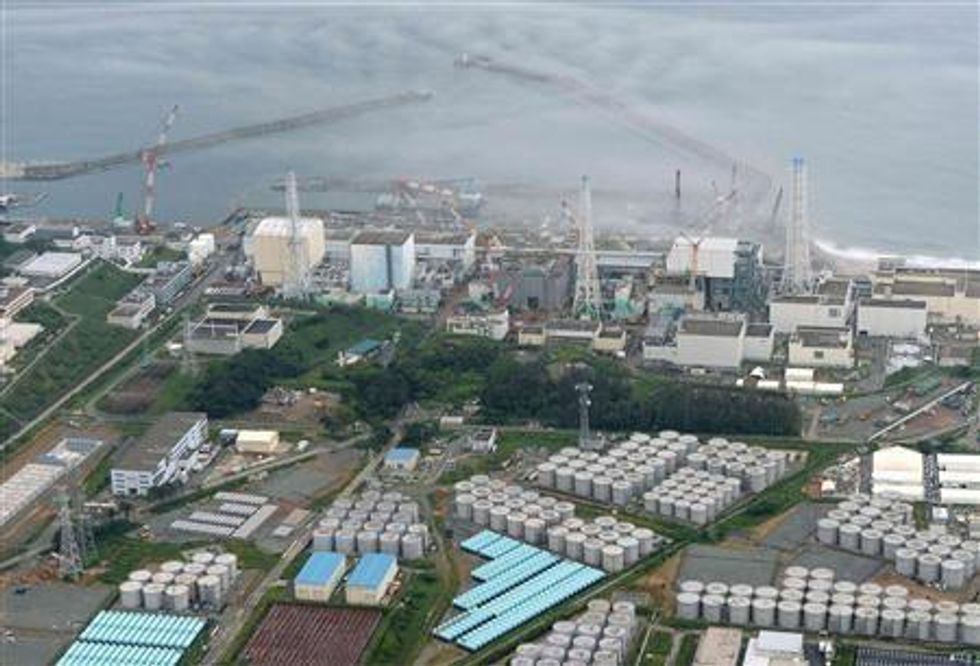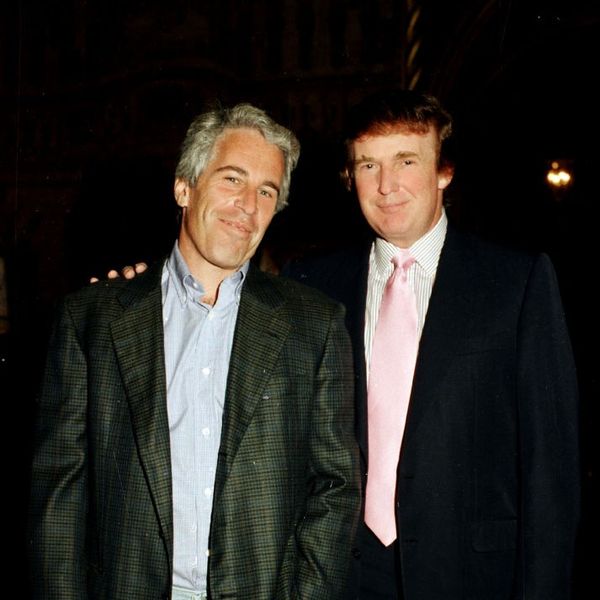Toxic Overflow of Thousands of Fukushima Tanks Following Heavy Rains
Environment Ministry announces clean-up delayed until 2017

According to officials with Tokyo Electric Power Co, or Tepco, water with high levels of radioactive strontium used to cool the damaged reactors overflowed thousands of containment tanks at the plant.
Reuters reports:
[C]ontainment areas surrounding 12 of 23 groups of tanks overflowed, with one of them containing Strontium-90 as highly concentrated as 710 Becquerels per liter - 71 times higher than the level set by the company as safe for release.
Strontium-90 is a by-product of the fission of uranium and plutonium in nuclear reactors as well as nuclear weapons, the U.S. Environmental Protection Agency says on its website.
Having planned for 30 to 40 millimeters of rainfall, the utility was "overwhelmed" when over 100 millimeters had accumulated by late afternoon.
"Our pumps could not keep up with the rainwater," said Tepco spokesman Yoshikazu Nagai.
Tepco told Kyodo News that they "cannot rule out the possibility that contaminated water has reached the Pacific Ocean via drainage conduits near the clusters," and added that they are working to determine that amount of contaminated water and what possible radioactive substances were released.
This latest contamination comes as Japan's environment ministry announced Monday that efforts to clean up the six towns and villages surrounding the Fukushima plant are proving to be "much more complicated than originally thought" and will be delayed until 2017.
"Ministry officials cited several reasons for the delay," BBC reports, "including a lack of space for the waste from the decontamination work."
_____________________
An Urgent Message From Our Co-Founder
Dear Common Dreams reader, The U.S. is on a fast track to authoritarianism like nothing I've ever seen. Meanwhile, corporate news outlets are utterly capitulating to Trump, twisting their coverage to avoid drawing his ire while lining up to stuff cash in his pockets. That's why I believe that Common Dreams is doing the best and most consequential reporting that we've ever done. Our small but mighty team is a progressive reporting powerhouse, covering the news every day that the corporate media never will. Our mission has always been simple: To inform. To inspire. And to ignite change for the common good. Now here's the key piece that I want all our readers to understand: None of this would be possible without your financial support. That's not just some fundraising cliche. It's the absolute and literal truth. We don't accept corporate advertising and never will. We don't have a paywall because we don't think people should be blocked from critical news based on their ability to pay. Everything we do is funded by the donations of readers like you. Will you donate now to help power the nonprofit, independent reporting of Common Dreams? Thank you for being a vital member of our community. Together, we can keep independent journalism alive when it’s needed most. - Craig Brown, Co-founder |

According to officials with Tokyo Electric Power Co, or Tepco, water with high levels of radioactive strontium used to cool the damaged reactors overflowed thousands of containment tanks at the plant.
Reuters reports:
[C]ontainment areas surrounding 12 of 23 groups of tanks overflowed, with one of them containing Strontium-90 as highly concentrated as 710 Becquerels per liter - 71 times higher than the level set by the company as safe for release.
Strontium-90 is a by-product of the fission of uranium and plutonium in nuclear reactors as well as nuclear weapons, the U.S. Environmental Protection Agency says on its website.
Having planned for 30 to 40 millimeters of rainfall, the utility was "overwhelmed" when over 100 millimeters had accumulated by late afternoon.
"Our pumps could not keep up with the rainwater," said Tepco spokesman Yoshikazu Nagai.
Tepco told Kyodo News that they "cannot rule out the possibility that contaminated water has reached the Pacific Ocean via drainage conduits near the clusters," and added that they are working to determine that amount of contaminated water and what possible radioactive substances were released.
This latest contamination comes as Japan's environment ministry announced Monday that efforts to clean up the six towns and villages surrounding the Fukushima plant are proving to be "much more complicated than originally thought" and will be delayed until 2017.
"Ministry officials cited several reasons for the delay," BBC reports, "including a lack of space for the waste from the decontamination work."
_____________________

According to officials with Tokyo Electric Power Co, or Tepco, water with high levels of radioactive strontium used to cool the damaged reactors overflowed thousands of containment tanks at the plant.
Reuters reports:
[C]ontainment areas surrounding 12 of 23 groups of tanks overflowed, with one of them containing Strontium-90 as highly concentrated as 710 Becquerels per liter - 71 times higher than the level set by the company as safe for release.
Strontium-90 is a by-product of the fission of uranium and plutonium in nuclear reactors as well as nuclear weapons, the U.S. Environmental Protection Agency says on its website.
Having planned for 30 to 40 millimeters of rainfall, the utility was "overwhelmed" when over 100 millimeters had accumulated by late afternoon.
"Our pumps could not keep up with the rainwater," said Tepco spokesman Yoshikazu Nagai.
Tepco told Kyodo News that they "cannot rule out the possibility that contaminated water has reached the Pacific Ocean via drainage conduits near the clusters," and added that they are working to determine that amount of contaminated water and what possible radioactive substances were released.
This latest contamination comes as Japan's environment ministry announced Monday that efforts to clean up the six towns and villages surrounding the Fukushima plant are proving to be "much more complicated than originally thought" and will be delayed until 2017.
"Ministry officials cited several reasons for the delay," BBC reports, "including a lack of space for the waste from the decontamination work."
_____________________

